Frequently Asked Questions
RGB (Red, Green, and Blue) colour is the colour on your monitor, NOT the colour used for printing.
To make any image suitable for printing it MUST be first converted to CMYK (Cyan, Magenta, Yellow, and blacK) colour.
The reason for this is because RGB colour is based on radiant light i.e. light coming from a light source and hitting your eyes; while CMYK colour is based on reflected light, i.e. light coming from an RGB source (such as the sun or a ceiling light), and reflecting off a surface and having certain frequencies cancelled out, producing CMYK colour.
Printers must use CMYK inks (and hence CMYK files) so that they can get the printed piece to reflect the right kind of RGB light which then hits your eyes to let you see the right colours.
Pantone colours are specialised ink colours not used in CMYK printing.
They can be selected on your machine if you have the proper palettes installed, but you cannot use them on the same page as a CMYK image (unless you want to pay extra printing fees…).
Essentially pantone colours are used when you want a colour image, but only need one or two colours and do not want to have the expense and effort of making a four colour piece. They can also be used to accent greyscale projects at little additional cost.
Pantone colours should never be printed at the same screen angle as black. If you are using the pantone colour in a duotone or as a screen overprinting black, the two colours dot pattern will print in the exact same area, producing an effect that is remarkably similar to mud.
Image file formats come in as many styles as there are image-processing programs. And if you are on a PC the options can be truly nightmarish, (.pcx, .gif, .tif, .jpg, .bmp). However, for the purposes of printing, it comes down to acceptable formats for output. Any images you send to us must be in either .jpg or .bmp format.
Anything else has a very remote chance of being output correctly, and we may refuse the file, OR, convert it to something that IS usable and then charge you for the service.
NOTE: No images from the web are EVER suitable for printing, all images on the web are either RGB colour or Indexed colour, both unacceptable and are ALWAYS of very poor resolution (i.e. 72 dpi – optimal dpi for printing is 300 dpi).
There are three standard programs for layout and printing in the design and prepress world. These are; Corel Draw, Adobe InDesign and QuarkXpress.
Any file you make should use one of these three major programs in order to be properly output. If you do not have one of these three programs, then there are options. Most bureaus will accept foreign files (i.e. Files coming from programs that are not one of the “big three”) that have been converted to either postscript or EPS (.eps) formats.
What this means is that instead of giving the file “as is” to us we must first print it to a downloadable file that can then be dumped directly into the outside bureau’s image setters.
For more information on how to make .eps files, please see your program manual. We will be posting a short “how to” here soon.
Other notes – Word processing programs are not, and will not be, suitable for final output. They do not provide cropping or registration marks, and cannot handle colour separation at all. Do not even try it!
All fonts used in your document MUST accompany that document when it is submitted to Coburg Printworks.
Most prepress houses will have an extensive library of fonts, but they may not be the same as the fonts YOU use, or they may be of a slightly different format from the ones you use, and as such will cause reflow of your text; not a good thing. In addition, while some fonts are very popular right now (such as Mason, Remedy, Exocet, and Abaddon) there is a better than average chance that your prepress house will NOT have them.
Not having the right fonts handy, or not having them supplied by YOU is a job-stopper that will ALWAYS be charged to you. So do not do it, include all the fonts always.
There is only one thing you need to know when considering postscript fonts vs. truetype fonts, and that is…DO NOT USE TRUETYPE FONTS!
Postscript fonts have a special part of them that is designed to be read by image setters and high end printers that tells the image setter and/or printer EXACTLY how the font is supposed to look.
Truetype fonts on the other hand are designed to be printed on screens and laser printers, not image setters. Hence with a postscript font you ALWAYS know what is coming out when you print it.
Same as Postscript vs. Truetype fonts above but even more so. Truetype fonts on the PC have the annoying habit of converting themselves to other fonts at the drop of a hat.
If you MUST use Truetype fonts in your PC document then make sure that when you are done with the file you either have all the Truetype fonts converted to outlines or know the EXACT postscript equivalent and are willing to sit through several proofs before the final output.
Supplying Artwork
At Coburg Printworks we support most industry standard programs such as:
- CorelDraw
- QuarkXpress
- Indesign
- PageMaker
- Illustrator
- Photoshop
- Freehand
- as well as PDF’s created to our specifications
We can read different forms of media, such as:
- Zip disks (100Mb/250Mb)
- CD-Rom
- Floppy disks
- DVD’s
- Memory cards/flash drives
We will also accept emailable files (up to 2Mb)
Avoid using logos and images sourced from web pages as these will lead to poor results.
Best results are achieved if logos are sourced from original designers and images from professional photographers.
- Files should ideally be constructed in a page layout program such as Corel Draw, QuarkXpress, or InDesign.
- Include all image files used.
- List/supply fonts used.
- Provide colour or black and white laser prints.
- Supply all mock-ups on CD-Rom or Zip disk.
For QuarkXpress, colour picture box backgrounds should be white when importing images (except for .eps).
Use Black as a colour instead of Registration (unless you want every colour printed).
Do not impose pages, we have the software to do so.
Do not draw in crop marks when the application can generate them for you, and keep the document page setup at the size of the final print.
Keep the resolution of images at optimum size. i.e. Approximately 300ppi when at 100% and crop unused areas of the image to keep file size manageable.
Do not apply trapping to the layout document or to vector images (e.g. Illustrator) unless you supply separation printouts indicating where the trap has been applied.
If you are on a PC platform, ensure that file names are no longer than 36 characters.
Avoid using “Hairline” to specify line weight, it is better to use an exact value. e.g. 0.3pt.
Ensure that at least a 5mm bleed is applied where required.
Avoid using function keys as hotkeys for style sheets etc… (more than likely they are used by the program.)
Paper Sizes
There is a standardised system of related sheet sizes, based on a series of two different sizes called A or B – all of the same proportions.
All sizes have the rectangular of 1:sqrt2 which is mathematically unique – no other size allows paper to be cut or folded in half and yet retain the same proportion.
It is also not neccessary to give dimensions of paper, as descriptions such as A4 or A3 are in universal use.
| A series | B series | International Envelope Sizes | |||
|---|---|---|---|---|---|
| Type | Size (mm) | Type | Size (mm) | Type | Size (mm) |
| A0 | 1189 x 841 | B0 | 1414 x 1000 | DL | 110 x 220 |
| A1 | 841 x 594 | B1 | 1000 x 707 | B6 | 125 x 176 |
| A2 | 594 x 420 | B2 | 707 x 500 | B6/C4 | 125 x 324 |
| A3 | 420 x 297 | B3 | 500 x 353 | B5 | 176 x 250 |
| A4 | 297 x 210 | B4 | 353 x 250 | B4 | 250 x 353 |
| A5 | 210 x 148 | B5 | 250 x 176 | C6 | 114 x 162 |
| A6 | 148 x 105 | B6 | 176 x 125 | C5 | 162 x 229 |
| A7 | 105 x 74 | B7 | 125 x 88 | C4 | 229 x 324 |
| A8 | 74 x 52 | B8 | 88 x 62 | C3 | 324 x 458 |
| A9 | 52 x 37 | B9 | 62 x 44 | ||
| A10 | 37 x 26 | B10 | 44 x 31 | ||
Envelope Sizes
There is a standardised system of relative envelope sizes based on the A series of paper sizes. Also available is a range of imprint size envelopes which are pre metric sizes.








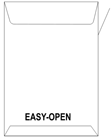
Symbol Index

Acid Free

Australian Made
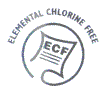
Elemental Chlorine Free (ECF)
The ECF process uses chlorine dioxide – when the bleaching process is complete, the chlorine atom leaves the process as chloride or salt.
* There is no toxological difference between waste waters generated from ECF or TCF based bleaching.

Envelopes
Specialty envelopes are available in DL 110 x 220mm.
Please call for other sizes or refer to specialty envelope section of price book.
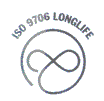
ISO 9706 Long Life

Laser Compatible

Laser Guaranteed

Normal Inks

Recycled
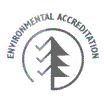
Environmental Accreditation

Reels/Sheeting
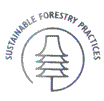
Sustainable Forestry Practices
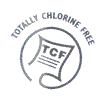
Totally Chlorine Free (TCF)

Watermarked

Strength/Durability/Water Resistance
Print Terminology
The following list define terms commonly used with printing.
We hope that this will help you to become more familiar with the terms that we use in the printing industry, as you discuss your project with us.
Accordion fold:
Bindery term, two or more parallel folds, which open like an accordion
Against the grain:
Perpendicular to direction of paper grain
Back up:
Printing the second side of a sheet already printed on one side
Banding:
Method of packaging printed pieces of paper using rubber or paper bands
Basis weight:
Weight in pounds of a ream of paper cut to the basic size for its grade
Bind:
To fasten sheets or signatures with wire, thread, glue or by other means
Bindery:
The finishing department of a print shop or firm specializing in finishing printed products
Blanket:
The thick rubber mat on a printing press that transfers ink from the plate to the paper
Bleed:
Printing that goes to the edge of the sheet after trimming
Blind embossing:
An image pressed into a sheet without ink or foil
Bulk:
Thickness of paper stock in thousandths of an inch or number of pages per inch
Bulk pack:
Boxing printed product without wrapping or banding
Burn:
Exposing a printing plate to high intensity light or placing an image on a printing plate
Butt:
Joining images without overlapping
Carbonless:
Pressure sensitive writing paper without the use of carbon paper
Caliper:
Paper thickness in thousands of an inch
Case blind:
A type of binding used in making hard cover books using glue
Cast coated:
Coated paper with a high gloss reflective finish
Coated paper:
A clay coated printing paper with a smooth finish
Collate:
A finishing term for gathering paper in a precise order
Colour bar:
A quality control term regarding the spots of ink colour on the tail of a sheet
Colour separations:
The process of preparing artwork for printing by separating into the four primary printing colours, CMYK
Comb bind:
To plastic comb bind by inserting the comb into punched holes
Contrast:
The tone change in colour from light to dark
Cover paper:
A heavy printing paper used to cover books, make presentation folders, etc…
Crop:
To cut off parts of a picture or image
Crop marks:
Printed lines showing where to trim a printed sheet
Crossover:
Printing across the gutter or from one page to the facing page of a publication
Cyan:
One of four standard process colours
Density:
The degree of colour or darkness of an image or photograph
Die:
Metal rule or imaged block used to cut or place an image on paper in the finishing process
Die cutting:
Curing images in or out of paper
Dot:
An element of halftones
Dummy:
A rough layout of a printed piece showing position and finished size
Duotone:
A halftone picture made up of two printed colours
Emboss:
Pressing an image into paper so that it will create a raised relief
Eurobind:
A patented method of binding perfect bound books so they will open and lay flatter
Flood:
To cover a printed page with ink, varnish or plastic coating
Foil:
A metallic or pigmented coating on plastic sheets or rolls used in foil stamping and foil embossing
Foil emboss:
Foil stamping and embossing an image on paper with a die
Foil stamping:
Using a die to place a metallic or pigmented image on paper
4-colour-process:
The process of combining four basic colours to create a full colour image
French fold:
Two folds at right angles to each other
Gloss:
A shiny look reflecting light
Grain:
The direction in which the paper fibre lie
Grippers:
The metal fingers on a printing press that hold the paper as it passes through the press
Hairline:
A very thin line or gap about the width of a hair or 1/100 inch
Halftone:
Converting a continuous tone to dots for printing
Hard copy:
The output of a computer printer or typed text sent for typesetting
Hickey:
Re-occurring unplanned spots that appear in the printed image from dust, lint, dried ink
Highlight:
The lightest areas in a picture or halftone
Image area:
Portion of paper on which ink can appear
Imposition:
Positioning printed pages so they will fold in the proper order
Imprint:
Adding copy to previously printed page
Indicia:
Postal information place on a printed product
Ink foundation:
The reservoir on a printing press that holds the ink
Kiss die cut:
To cut the top layer of a pressure sensitive sheet and not the backing
Laminate:
To cover with film; to bond or glue one surface to another
Lines per inch:
The number of rows of dots per inch in a halftone
Magenta:
Process red, one of the four basic process colours
Make-ready:
All the activities required to prepare a press for printing
Matte finish:
Dull paper or ink finish
Moire:
Occurs when screen angles are wrong causing odd patterns in tone
Negative:
The image on film that makes the white areas of originals black and black areas white
Offset paper:
Term for uncoated book paper
Opacity:
The amoount of “showing-through” on a printed sheet
Over-run or overs:
Copies printed in excess of the specified quantity (Printing trade terms allow for + – 10% to represent a completed order)
Page count:
Total number of pages in a book including blanks
Pattern carbon:
Special carbon paper used in business forms that only transfers in certain areas
Perfect bind:
A type of binding that glues the edge of sheets to a cover (e.g. Telephone book)
Perfecting press:
A sheet fed printing press that prints both sides of a sheet in one pass
Pica:
Unit of measure in typesetting. One pica = 1/6 inch
Plate gap:
Gripper space. The area where the grippers hold the sheet as it passes through the press
PMS:
The abbreviated name of the Pantone Colour Matching System
Point:
(PT) For paper, a unit of thickness = 1/1000 inch. For typesetting, a unit of height = 1/72 inch
Post Script:
(PS) The computer language most recognised by printing devices
Process colours:
(CMYK) Cyan, Magenta, Yellow, and Black. These 4 colours make 16 million when combined in 4 colour printing
Ream:
Five hundred sheets of paper
Recto:
Right-hand of an open book
Register:
To position print in the proper position in relation to the edge of the sheet and to other printing on the same sheet
Register marks:
Cross-hair lines or marks on film, plates and paper that guide strippers, plate makers, pressmen and bindery personnel in processing an order
Saddle stitch:
Binding a booklet or magazine with staples in the seam where it folds
Score:
A crease put on paper to help it fold better
Self-cover:
Using the same paper as the text for the cover
Shadow:
The darkest areas of a photograph
Show-through:
Printing on one side of a sheet that can be seen on the other side of the sheet
Side stitch:
Binding by stapling along one side of a sheet
Signature:
A sheet of printed pages which when folded become a part of a book or publication
Spine:
The binding edge of a book or publication
Spoilage:
Planned paper waste for all printing operations
Spot varnish:
Varnish used to highlight a specific part of the printed sheet
Stamping:
Term for foil stamping
Stat:
Term for inexpensive print of line copy or halftone
Stet:
A proof mark meaning let the original copy stand
Stock:
The material to be printed
Stripping:
The positioning of film on a flat prior to platemaking
Substance weight:
A term of basis weight when referring to bond paper
top of page ^
Tints:
A shade of a single colour or combined colours
Transparency:
A positive photographic slide on film allowing light to pass through
Trapping:
The ability to print one ink over the other
Trim marks:
Similar to crop or register marks. These marks show where to trim the printed sheet
Trim size:
The size of a printed image after the last trim is made
UV coating:
Liquid laminate bonded and cured with ultraviolet light
Varnish:
A clear liquid applied to printed surfaces for looks and protection
Verso:
The left side page of an open book
Vignette halftone:
A halftone gradually fades to white
Watermark:
A design created in paper at the time of manufacture that can be seen by holding the paper up to a light
Web press:
Large presses that print from rolls of paper (e.g. newspaper printing)
With the grain:
Feeding paper into a press or folds in paper is parallel to the grain of the paper
Work and tumble:
Printing one side of a sheet and turning it over from the gripper to the tail, utilising the same guides and plate for the reverse side
Work and turn:
Printing on one side of a sheet and turning it over from left to right, utilising the same side guides and plate for the reverse side
